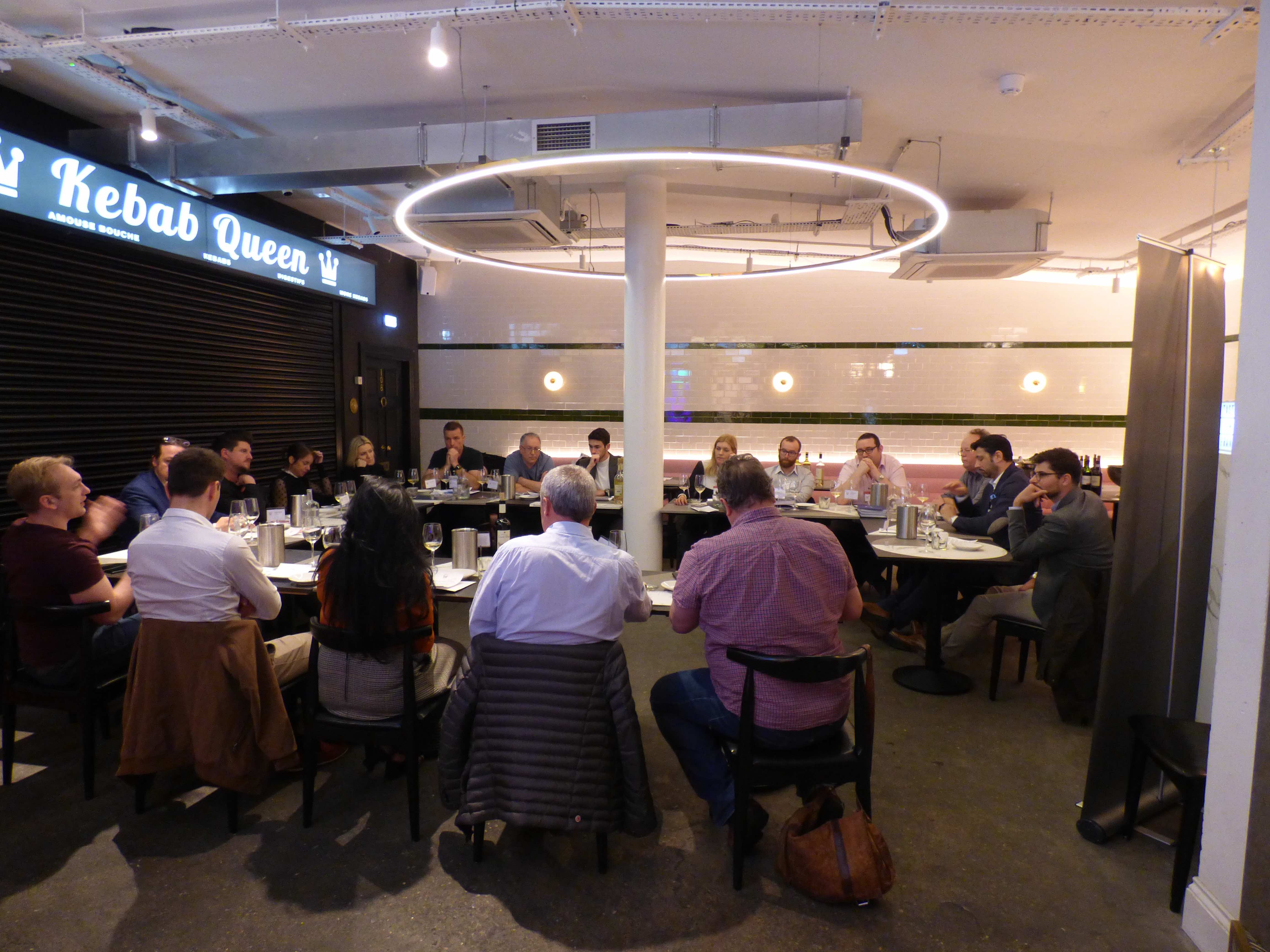Sparkling wine continues to be star of the wine category in both the on and off-trades. But how well are French sparkling wines doing and which styles are buyers looking to put on their lists?
Ask any bar, restaurant or hotel in the country which styles of wines are they selling the most then you can probably bet your mortgage on them saying sparkling wine. But whilst the rise and dominance of Prosecco is well documented, what are the other big movers and go tos for buyers be they importing wine, or looking for new opportunities on their restaurant wine list?
The recent tasting and panel debate, co-hosted between The Buyer and Business France, was a great opportunity to show leading wine merchants, importers and restaurants the many different styles of French sparkling wines that can now offer such a rich source of opportunities for buyers in the premium on-trade. In particular, there was a chance to explore the myriad of styles of Crémant that are now really beginning to emerge as a category in its own right, as well as looking at how other classic regions of France, like Burgundy, are doing with sparkling wine.
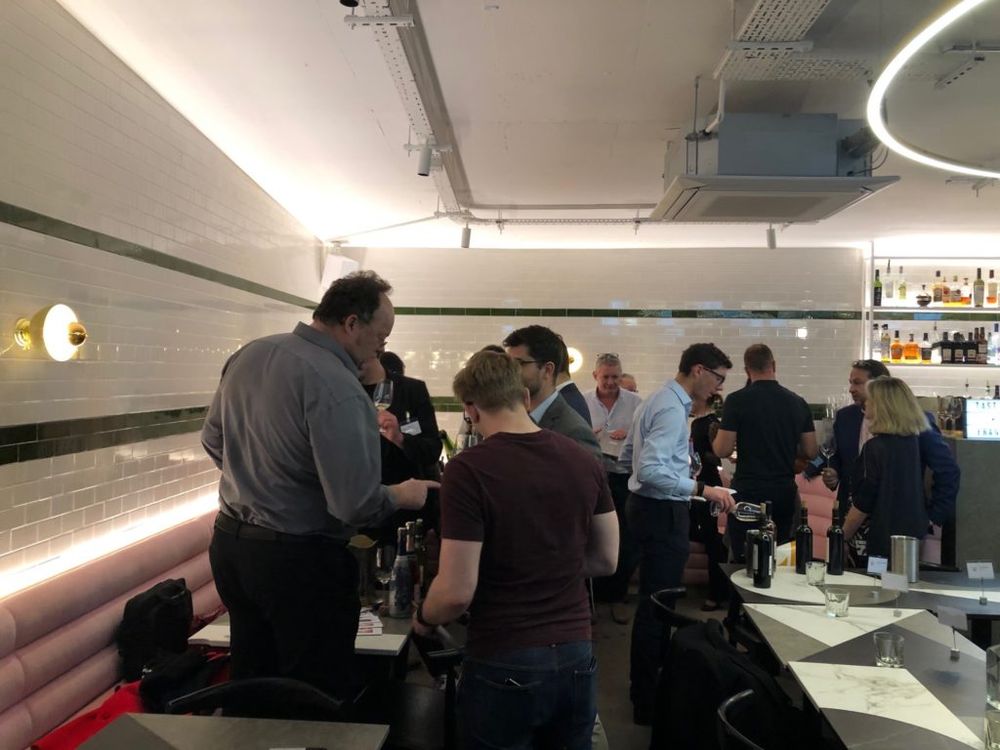
The buyers had the chance to meet the French producers and taste their wines
The buyers included:
- Doug Wregg, sales and marketing director, Les Caves de Pyrene.
- John Graves, on-trade channel director at Bibendum.
- Jonathan Kleeman, sommelier and ‘director of hydration’ at Twisted Cellar, a new wine merchants in Bishop Stortford.
- Rebecca Palmer, associate director and wine buyer at Corney & Barrow.
- Dawn Mannis, co-founder, The Sampler.
- Andrew Gray, Grays & Feather, a new West End London bar that specialises in sparkling wine
- Ashika Mathews, head of buying at 31 Dover, the online wine business.
- John Chapman, operations director, Oxford Wine Company.
- Tom Gilbey, founder of The Vintner.
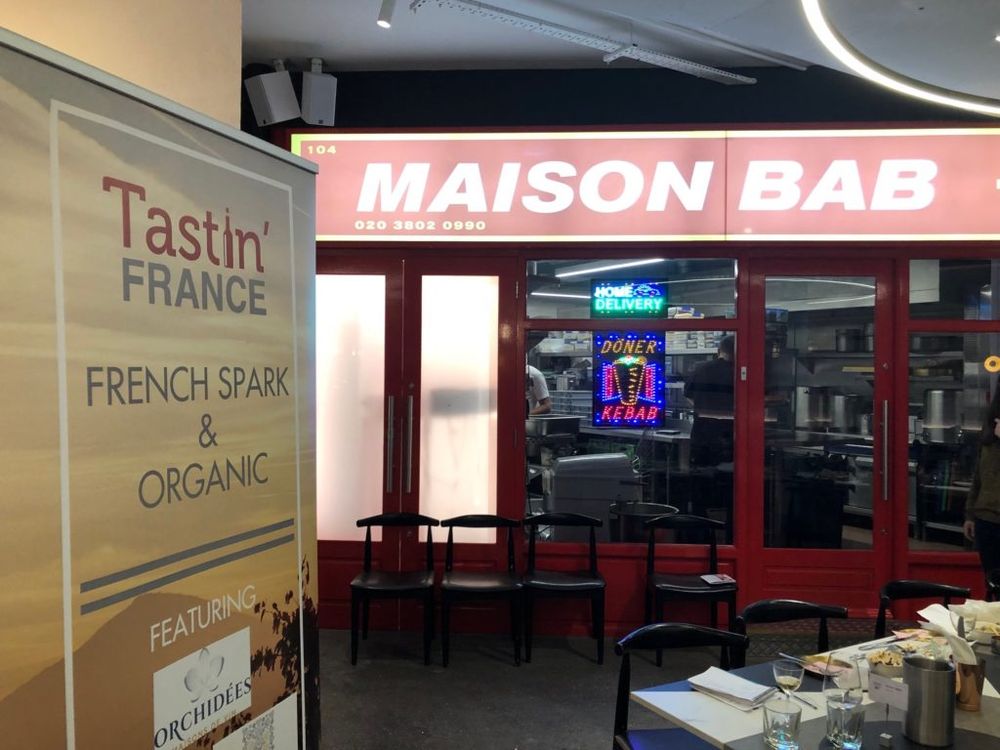
The rather more unusual setting of the basement at Maison Bab in Covent Garden was the setting for The Buyer French Debate
Producers taking part:
- Emmanuel Vergely from Bestheim a large Alsace producer, including 8 million bottles per year and 6 million sparkling. Regarded as a pioneer of Crémant d’Alsace.
- Thomas Fonteyreaud from Tich & Grava, a family run Bordeaux domaine producing red and white wines and Crémant de Bordeaux Rosé 100% Cabernet Franc.
- Pierre Coquard from Vins des Broyers, craft wine producer including Jeu de Bulles Brut Nature, Extra-Brut, Extra Sec & Bulles Sec are Burgundy Rosé wines made from 100% Gamay.
- Adrien Cavalli and Arnaud Martin from Domaines Auriol a fully organic range of Languedoc wines AOP and IGP including red, white, rosé and sparkling including AOP Limoux.
- Cécile Thomas of Escher & Thomas an organic producer from the Loire Valley (Melon B, Sauvignon, Chenin, Gamay).
- François Reverdy of Orchidées Maisons de Vin, Loire Valley AOP Touraine, AOP Saumur, AOP Crémant de Loire.
- Jean-Pierre and Adrien Guibergia of Domaine de la Grande Pallière organic producer in Provence since 1998, AOC Côte de Provence red, white and rosé.
François Reverdy of the Orchidées Maisons de Vin in Loire said there had been concerted efforts by the different Crémant regions to come together and help do joint promotional initiatives to raise its overall profile and image. “We want the average wine consumer to be more aware of Crémant,” he said. “We know we have a lot of work to do to explain our wines, but we have started to look at ways in which we can educate and help to sell more Crémant.”
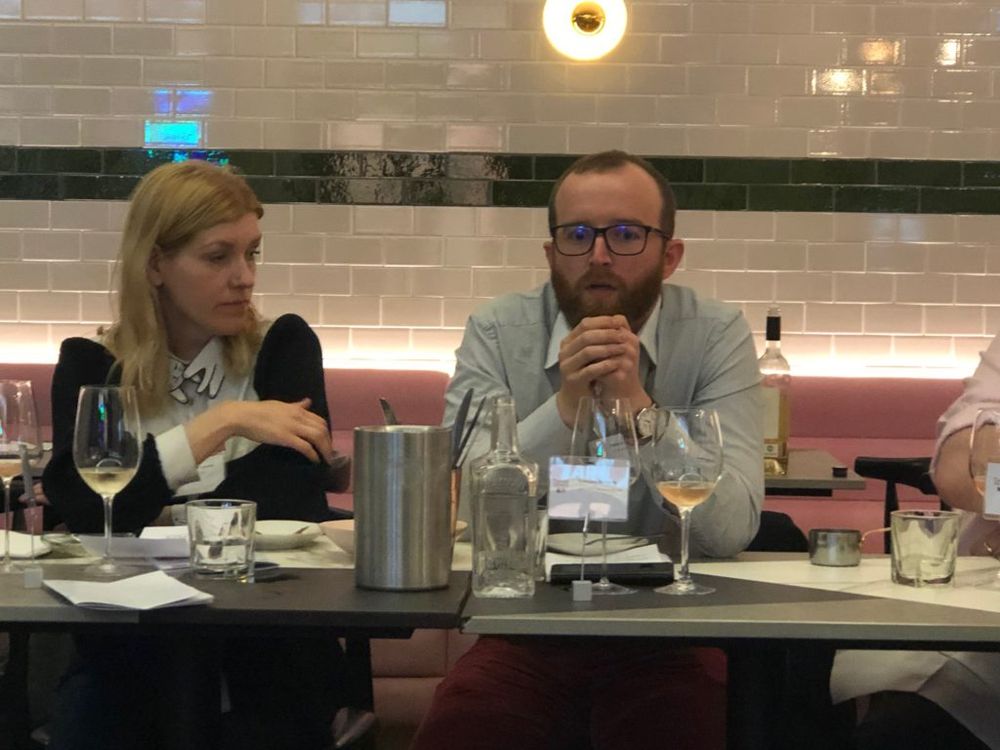
François Reverdy of the Orchidées Maisons de Vin in Loire says there is now a real effort to push Crémant in France
Bestheim can lay claim to be the third biggest producer of Crémant in Alsace and brought its Crémant d’Alsace Le Brut Hopla, AOC Crémant d’Alsace (Non Vintage, Pinot Blanc, Pinot Auxerrois) and its organic Crémant d’Alsace Brut Bio “Fourmidable” by Bestheim (NV, Pinot Blanc, Pinot Auxerrois) to the event.
Emmanuel Vergely at Bestheim said it saw Crémant as a great way to “appeal to younger consumers by bringing something new to the market”. Which is why it puts all its focus on producing a wine full of “freshness and fruits”.
It was equally important, he added, to have an organic Crémant version, “as that is what the export market is increasingly asking for”.
Thomas Fonteyreaud, winemaker at Tich & Grava in southern Bordeaux, who was able to show his Crémant Rosé 1854 Domaine de Grava, AOP Crémant de Bordeaux (NV, 100% Cabernet Franc) and Sainte Croix de Mont, said his ultimate goal is to make wines he “can share with his friends and family” and that also “respond to the new consumer” and their demand for fresher, lighter sparkling wines.
To make the 1854 rosé he spent some time experimenting and trying different styles of Cabernet Franc to get the right wine. He is also looking, he added, to work with local artists to create eye catching and more appealing labels to attract these new consumers.
Open door
The French producers appear to be pushing at an open door when it comes to sparkling wine if our panel of buyers was anything to go by.

Grays & Feather in Covent Garden is dedicated to promoting sparkling wine from around the world
Andrew Gray at Grays & Feathers says he is particularly pleased to be able to represent all Crémant regions in France, so much so that he has become an official Crémant ambassador.
Tom Gilbey at The Vintner said he was also having particular success with the lighter styles and sparkling wines from Limoux and Crémant de Bourgogne. “There are some extraordinary and beautiful wines coming out of Limoux,” he said which are proving to be a good alternative for those looking for something different that sits between Prosecco and Champagne.
Dawn Mannis at The Sampler said she now regularly gets customers coming in asking specifically for Crémant, which was not the case a couple of years ago. What’s more they are happy to pay up £20 a bottle. “They see it is a good quality alternative to Champagne and Prosecco. We actually sell more Crémant than Prosecco now.”
Rebecca Palmer at Corney & Barrow also sees Crémant becoming a good alternative to Prosecco, but its problem lies in persuading more on-trade operators and buyers to give it a go, particularly as it is normally more expensive.
Gilbey added: “I think it is more education and making people aware of these different styles. It is, though, hard to convince someone to pay £19 or £20 for a Crémant when they get Champagne for less than £12 in Lidl.”
Looking for alternatives
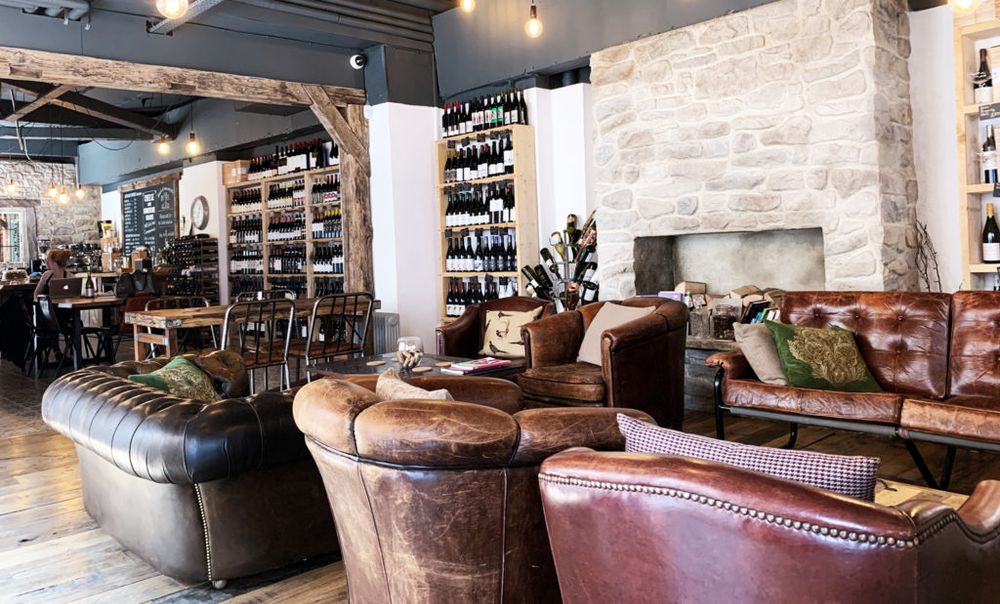
The relaxed vibe at Twisted Cellar in Bishop’s Stortford where the emphasis is very much on offering alternative styles of sparkling wine
Jonathan Kleeman at Twisted Cellar new merchants and bar business in Bishop Stortford, said he was definitely seeing a backlash against Prosecco, particularly in the “London City bubble”. “People are sick of Prosecco and are looking for an alternative, be it from Italy or France.” But he also warned the UK consumer is notoriously “hard to break down” and change its ways that easily.
Doug Wregg at Les Caves de Pryene said it was more of an issue at the premium end of the on-trade to get restaurants, and their F&B managers, to offer something different to all the house Champagnes they pour.“A Brut Crémant, for example, made with the same care and attention can be a great addition to a list,” he added.
He welcomed the fact more consumers are actively asking for Crémant, but said it would be some time before they recognised or appreciated the regional differences and that for now it was very much the generic “Crémant” they were looking for.
John Graves at Bibendum said he was particularly impressed by the “really interesting” Crémants shown at the tasting, but stressed we are at an early stage and it is “still very much a hand sell”. “There is going to be a need for a certain level of education and understanding of what Crémant is about to take it to the next level.”
Crémant: something special

The French debate was an opportunity for buyers and producers to talk openly about the opportunities for sparkling wine in the UK on-trade
But, he stressed, there was no need for Crémant to become a big seller. Far from it. “You have such a good product here. You can almost create your own category. We need Crémant to be seen as a special premium sparkling wine, and not to become mainstream and drag it downwards. It’s got so many good things going for it, not least as a gastronomic sparkling wine.”
“We have to start somewhere with Crémant,” said Mathews, who was particularly “encouraged” about the amount of interest it had seen for Crémant on its 31 Dover e-commerce site.
Gray, though, was confident the trade would “find the tools” it needs to help sell Crémant as the wines are certainly worth the effort.
“Crémant has got a greatly good quality to value ratio,” added Chapman at Oxford Wine Company. He thought it would not be until there are a few big Crémant brands in the market before there was a big swing in demand.
“There are two areas of growth in sparkling. Crémant and English. Both are quality products, not chasing price points,” he added. “We don’t want to see people selling Crémant below £10 a bottle. We are selling Crémants at between £12 to £20.”
Wregg was confident Crémant could keep its quality position, for as long as growers and producers were committed to only making it from “decent grapes – that’s the key”. “Crémant needs to be perceived as a quality drink. It should not become generic.”
Other sparkling
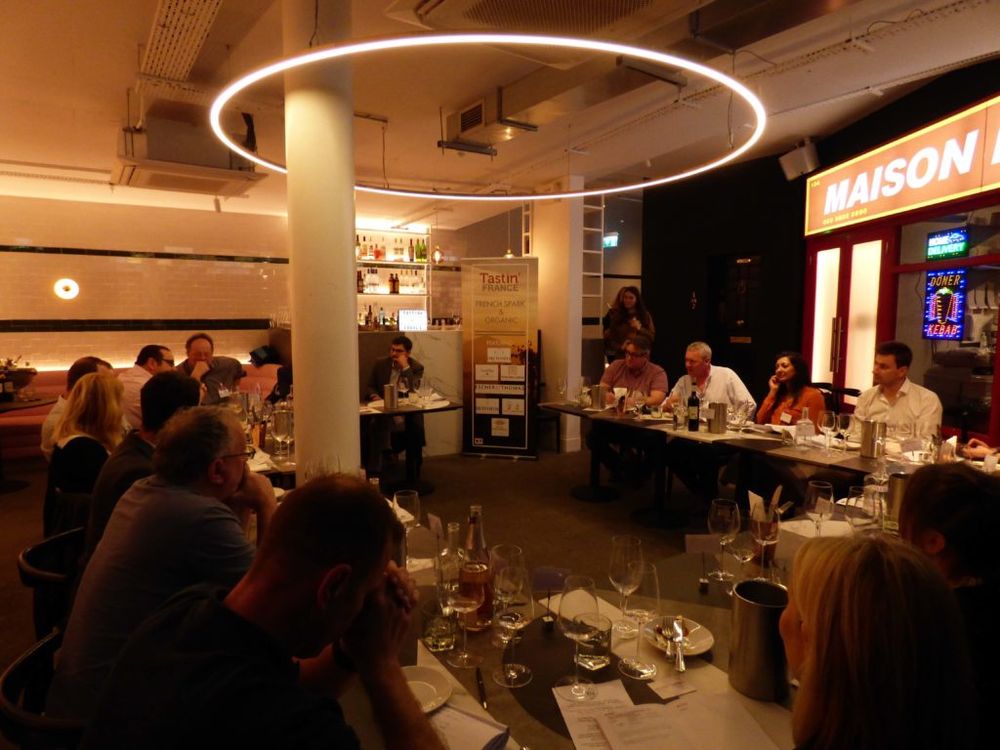
The debate was an opportunity to look at different styles of French sparkling wine
Crémant is not the only sparkling wine style grabbing the attention in France. Each region has the capacity and capability of bringing its own approach and style of sparkling.
Like Escher & Thomas, an organic producer from the Loire Valley, which made the deliberate move to specialise in sparkling wines when it first set itself up. Cécile Thomas said its aim was to make sparkling wines that truly express the varieties from which there are made.
It has also been willing to step outside the norm and look to make sparkling wine from non-traditional varieties, including Sauvignon Blanc and Melon de Bourgogne, or the 100% Chenin Vouvray Brut AOC it showed during the panel debate and tasting. Escher & Thomas also uses the 1895C strain yeast in its wines to produce extra aromatic and delicate sparkling wines.
François Reverdy of the Orchidées Maisons de Vin said he was confident traditional cuvées from strong regions like the Loire still have great potential. He was able to demonstrate how well aged sparkling wine is doing in France with its Touraine AOP Blanc Cuvée JM Brut Monmousseau which had been aged for 36 months. Or the Saumur style from Royal Ackerman which has been aged up to 30 months.
Pierre Coquard, owner of Vins des Broyers in southern Burgundy, said his “dream” is to make the best possible sparkling wines he can from Gamay. His Jeu de Bulles wine, which he makes in Demi Sec, Extra Brut and Brut Nature, can be both enjoyed in a Michelin star restaurant, or drunk simply at home, he said
Summary
As France is such a dominant player in the on-trade and sparkling wine is still the fastest growing category then it makes complete sense to look at France as a key country from where to source your sparkling offer. The producers were able to show the diversity that is available and the panel certainly showed how open they are to different styles of sparkling wine, providing the emphasis is on premium and pushing price points upwards.

The debate proved to be a good networking and business opportunity for the buyers and producers
Wines and food
The debate also included the chance for the panel to taste through a selection of wines chosen by the producers, that were served by matching dishes from the Maison Bab menu. They included:
Bestheim, Crémant d’Alsace Le Brut Hopla – AOC Crémant d’Alsace (NV, Pinot Blanc, Pinot Auxerrois)
Bestheim Crémant d’Alsace Brut Bio “Fourmidable” – AOC Crémant d’Alsace (NV, Pinot Blanc, Pinot Auxerrois)
Smoked beurre noisette hummus
Escher & Thomas, Melon B. Méthode Traditionnelle Extra Brut, Loire Valley, 2016
Escher & Thomas, Vouvray Brut AOC, Loire Valley, 2015
Doner beignet with smoked chilli sauce and garlic mayonnaise
La Grande Pallière Blanc, AOP Côtes de Provence, 2018
Domaine Tich & Grava, AOP Sainte Croix du Mont, Bordeaux, 2015/2018
Roasted broccoli with iskender sauce and almonds
Jeu De Bulles Brut-Nature, Bourgogne, 2016/2017
Jeu De Bulles Extra-Brut, Bourgogne, 2016/2017
Maison babaganoush with green chilli relish and house flatbread
Touraine AOP Blanc Cuvée JM Brut Monmousseau, Loire Valley, AOP Touraine (NV, Chenin Blanc).
Saumur Mx AOP Royal Ackerman Blanc Brut, Loire Valley,AOP Saumur Mx, 2016 (Chenin, Chardonnay, Cabernet Franc).
Cod cheeks with lemon hummus, wild garlic and crushed peanuts
Crémant Rosé 1854 Domaine de Grava, AOP Crémant de Bordeaux
La Grande Pallière Rosé, AOP Côtes de Provence, 2018
Jay’s mutton curry with dates and labheh
Akene CAB, IGP Pays D’Oc, 2018
Herdwick lamb adana with Mustafa yogurt, pickled onions and dill.
- You can read the first part of the debate that focused on organics wines here.
